

Why We Need to See Each Other Teach. Robertkaplinsky. 7 Ways to Spark Engagement. Student engagement is the Mega Millions of education: When you hear about it, it seems so easy to win—and then you read about the odds. The good news is that there are effective strategies for boosting student engagement, and they’re considerably more likely to pay off than playing the lottery. A growing body of research in education and the social sciences suggests that students’ curiosity can be stimulated in ways that strengthen their connectedness to lessons, interactions with each other, and willingness to commit to learning goals.
There are simple techniques that teachers can use during a lesson to boost curiosity, and thus engagement, among students—especially older ones, who are at greater risk for losing interest. Boosting Student Engagement 1. Robertkaplinsky. 32 Research-Based Instructional Strategies - A New Definition of Rigor. You would think that it would be more prevalent than it is.
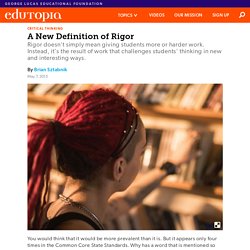
But it appears only four times in the Common Core State Standards. Why has a word that is mentioned so little caused such dread, anxiety, and confusion among teachers? I'm talking about rigor. 7 Reasons Why Differentiated Instruction Works. Differentiated instruction (DI) begins with an accurate understanding of what DI is—and is not.

You may be surprised how easy it is to incorporate into your classrooms. 1. Differentiated instruction IS proactive. In a differentiated classroom, the teacher assumes that different learners have differing needs and proactively plans lessons that provide a variety of ways to “get at” and express learning. The teacher may still need to fine tune instruction for some learners, but because the teacher knows the varied learner needs within the classroom and selects learning options accordingly, the chances are greater that these experiences will be an appropriate fit for most learners. Effective differentiation is typically designed to be robust enough to engage and challenge the full range of learners in the classroom. 2.
Many teachers incorrectly assume that differentiating instruction means giving some students more work to do, and others less. 3. 4. 5. 6. 7. Webinar: How to Give Effective Feedback to Your Students. Quick fixes and silver bullets… – Thinking Mathematically. I find myself reflecting on what I believe is best for my students and best for my students’ beliefs about what mathematics is often.

When I get the opportunity to take a look at my students’ work and time to determine next steps, I can’t help but reflect on how my beliefs inform what next steps I would take. However, I wonder, given the same students and the same results, if we would all give the same next steps? 12 Mistakes All Teachers Make (And How to Get Past Them) - WeAreTeachers. We’ve all made mistakes in the classroom.

New Teachers: Classroom Management Essentials. Before I share my thoughts, I must make a disclaimer.

If you’re looking for a magic solution to classroom challenges, the following will be helpful, but don’t expect major changes overnight. And please remember that a strong instructional philosophy (i.e., how one believes students best learn) and a well-thought-out lesson plan form the foundation for effective student learning. With all that said, the following are four must-haves for a successful classroom. 1. Kids Speak Out on Student Engagement. A while back, I was asked, "What engages students?

" Sure, I could respond, sharing anecdotes about what I believed to be engaging, but I thought it would be so much better to lob that question to my own eighth graders. The responses I received from all 220 of them seemed to fall under 10 categories, representing reoccuring themes that appeared again and again. So, from the mouths of babes, here are my students' answers to the question: "What engages students? " 1. 30 Habits Of Highly Effective Teachers. Editor’s Note: We often look at the qualities and characteristics of good teaching and learning, including the recent following pieces: How A Good Teacher Becomes Great What You Owe Your Students Ten Secrets To Surviving As A Teacher The Characteristics Of A Highly Effective Learning Environment How To Be A Mediocre Teacher 25 Things Successful Teachers Do Differently by Julie DuNeen, Sketch Note Via Janet Hamilton If you ask a student what makes him or her successful in school, you probably won’t hear about some fantastic new book or video lecture series.
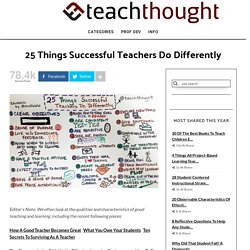
Education Week. 8 Characteristics Of A Great Teacher. 8 Characteristics Of A Great Teacher by Ian Lancaster What makes a teacher strong?
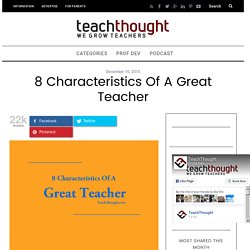
What differentiates the best from the rest? There’s no shortage of bodies (some dramatically misguided) attempting to solve this riddle. The answers are nebulous at best. 1. Confidence while teaching can mean any number of things, it can range from having confidence in your knowledge of the material being learned to having confidence that your teaching acumen is second to none.
Education Week. Commentary.
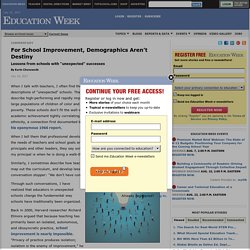
Problem-Based Learning for All: The Four C's - Robert Kaplinsky. If you think others need to see this, share it on one of the sites below by clicking on the button.
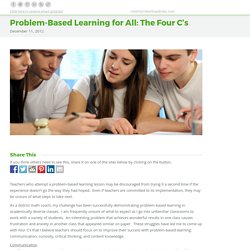
Teachers who attempt a problem-based learning lesson may be discouraged from trying it a second time if the experience doesn’t go the way they had hoped. Hattie's Index Of Teaching & Learning Strategies: 39 Effect Sizes In Ascending Order. An Index Of Teaching & Learning Strategies: 39 Effect Sizes In Ascending Order by Dana Schon, sai-iowa.org Effect Size Defined Statistically speaking, the strength of the relationship between two variables. John Hattie, Professor of Education and Director of the Melbourne Education Research Institute at the University of Melbourne, Australia, says ‘effect sizes’ are the best way of answering the question ‘what has the greatest influence on student learning?’ Effect Size Applied. 20 Observable Characteristics Of Effective Teaching -
20 Observable Characteristics Of Effective Teaching by TeachThought Staff What makes an effective teacher? Or more specifically, what observable characteristics might you see and hear? The University of Minnesota offered some observable characteristics of effective teaching which, while focused on teacher actions rather than student learning, had some useful tips–not so much how to teach generally, but specific actions that you can use tomorrow. In “How A Good Teacher Becomes Great,” we theorized that good teachers “know which assessments are for “show,” and which are for “go”—that is, which look good from 10 feet, and which provide visibility for both the student and teacher where the learning needs to go next,” and that they model curiosity, collaborate with other great teachers, and “measure understanding in diverse ways.”